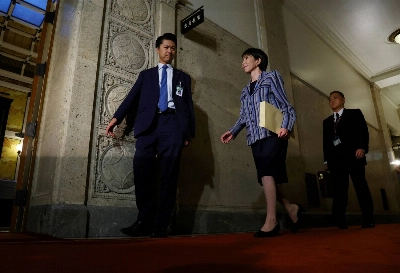In the 1980s, Japanese economists used to boast of their country's economic prowess and deride U.S. economic decline. To be sure, the U.S. manufacturing industry in those years fell into a miserable condition, and the nation suffered from ever-expanding trade and budget deficits. Yet things began changing dramatically in the spring of 1991, and the U.S. economy went on to stage an amazing recovery.
The 1980s for the United States were a transition period from an industrial society to a postindustrial society. It suffered growing pains while experiencing dramatic changes in its economic structure. In the early 1990s, the U.S. overcame the pains and successfully shifted toward a postindustrial society. After climbing the flight of stairs of the industrial society, it stood on a landing, ready to begin another flight of stairs -- the postindustrial society -- at a fast pace.
In the postindustrial society, the manufacturing industry reactivates itself by reforming production and management processes with the aid of information technology, while the nonmanufacturing industry -- such as the financial, information and telecommunications sectors -- controls the nerve center of the economy.


















With your current subscription plan you can comment on stories. However, before writing your first comment, please create a display name in the Profile section of your subscriber account page.